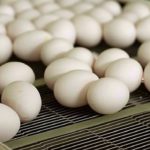
Tag Archives Biosecurity

New Zealand’s constant battle with invasive species
Agriculture is considered New Zealand’s primary industry, but the incursion of disease and pests poses a constant threat to farmers on the island nation

Task force meets with public about rural vet services
Rural Veterinary Task Force members say there have been a number of industry changes impacting service demands since the previous system review in 2008

VIDEO: Man’s best friend helps maintain biosecurity in New Zealand
Manitoba Co-operator reporter Shannon VanRaes on assignment at the International Federation of Agricultural Journalists in New Zealand

Opinion: How open is Open Farm Day?
Livestock industry is risking its social licence

Standing tall: How Canada’s pork sector survived the attack of a killer virus
PEDv decimated the U.S. hog herd, but Canada showed how to do biosecurity right

Avian flu risk higher with fall migrations

SW Ontario pullet flock’s ILT contained

Wild birds have higher resistance to flu virus
With bird flu ravaging barns in the U.S. and knocking at Canada’s door, it might be time to reconsider how poultry are raised

Sysco sees U.S. bird flu hurting egg supply up to 18 months

Clubroot resistance collapses for canola in Alberta
Be proactive about prevention


